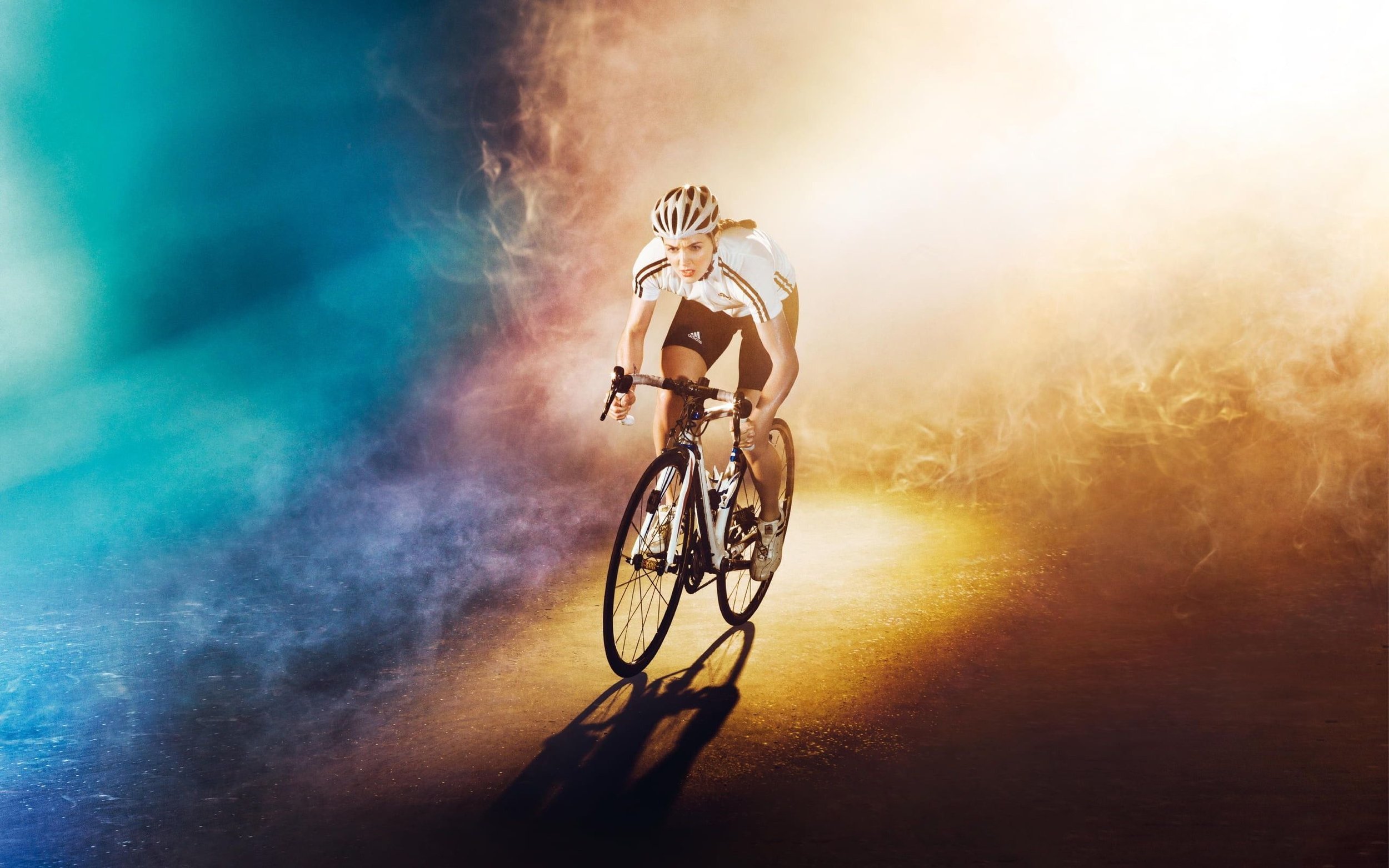Anaerobic Exhaustion and recovery
Anaerobic exhaustion is a state whereby the athlete has totally spent all of his of anaerobic capacity, or whereby lactic glycolysis has spent all available glycogen.
There may be a great number of reasons for global fatigue but anaerobic exhaustion is the only one that appears on a relatively short time, and from which an athlete can recover in short time, say a few minutes.
Let us use the notation W’ for the total amount or anaerobic capacity, and W'bal for the actual anaerobic reserve.
In order to understand the dynamics of anaerobic EXREC - EXhaustion - RECovery we need to answer the questions
1. How fast is our anaerobic reserve depleted upon riding at a certain power. Otherwise , how much of the total power is anaerobic ?
2. When and how fast do we recover W'bal ?
Depletion of the Anaerobc reserve
The decreasing of the anaerobic reserve when riding at power P during unit time t can easily be calculated as
Loss of anaerobic reserve = Power x Anaerobic Fraction x time
This plot shows the anaerobic power fraction vs. total power P for a particular cyclist.
For all power between 0 and his RT of 346 W the anaerobic contribution or loss is zero, and recovery may occur.
Between 346 W and his SCP of 477 W his anaerobic fraction increases linearly from zero to approximately 6 % .These orange points indicate the hard exercise or Slow Death zone. In this graph the yellow zone might appear as almost negligible but it is the most important zone for eventually winning the Tour de France because all long climbs and time trials are mainly ridden in this power zone.
At power higher than 477 W (red data ) we enter the severe exercise, or Fast Death zone. Here the anaerobic power is simply proportional to the total power because all efforts are higher that the maximal aerobic power, and thus
Loss of anaerobic reserve = (Power – Maximal Aerobic Power) x time
In cycling slang “shooting a cartouche" or “burning a match” means depleting your anaerobic reserve to near zero in one continuous effort.
Recovering anaerobic reserve W'bal
After may-be 10 or 20 minutes a new cartouche may be shot.
In order to recover from this depletion we must reduce power to below the recovery threshold RT, and the rate of recovery is proportional to how deep under RT we are
The rate of recovery is proportional to (RT – Power)
This recovery rate is also proportional to the inverse of the state of depletion. The deeper the state of depletion, the lower the reserve, the faster the restore rate.
Think of it as if the anaerobic reserve were a small vessel with liquid connected to a second huge vessel with a tap that can be open or closed. On opening the tap liquid flows from the big into the small vessel. The flow depends on how far you open the tap i.e. (RT-P) and on the difference of the liquid levels in both vessels e.g. W'bal
Let λ be the rate of restoring then λ = (RT - P)/W'bal and the half-life time for recovery is T1/2 = 0,693/λ
To clarify a little , suppose a cyclist is 50% depleted from a total anaerobic capacity W' of 18000 J and he reduces his power to 45 W below his recovery threshold RT then
Recovery rate λ = 45 /9000 = 0,005 s-1
The half-life time T1/2 = 0,693 /λ = 138,6 s
thus after approximately 140 sec his anaerobic reserve has recovered from 9000 Joule to 13500 Joule.
Correct ? Not quite because when W'bal increases, T1/2 also increases and the recovery slows down when it progresses. Therefore the recovery has to be calculated from second to second with an ever changing half-life T1/2
This Exhaustion-Recovery process can be coded into computer applications such as
1. TYPHOON : As a standalone program, taking its power data input from a recorded power file.
2. SUPERCYCLE : As Android or IOS app that allows its recording and visualization live during the ride
Typhoon and Supercycle are twins, they use exactly identical mathematical models and yield identical results.
Both programs or apps need to know the basic parameters from the extended CP-model i.e. RT, CP, W’, W” and SCP and in order to compute these it is necessary to test and introduce some 5 reference power-duration data. For practical reasons we obtain these record values from tests to exhaustion after 2 min, 5 min, 10 min, 20 min and 40 min


